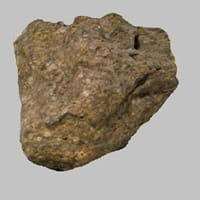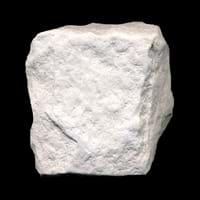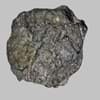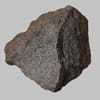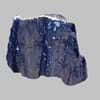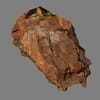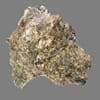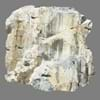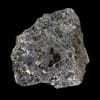Definition
Tuff is a type of rock made of volcanic ash ejected from a vent during a volcanic eruption
Diatomite is a fine-grained sedimentary rock which is formed from consolidated diatomaceous earth
Discoverer
Unknown
Unknown
Etymology
From a Latin word tophous then in Italian tufo and finally tuff
From diatom + -ite1
Class
Igneous Rocks
Sedimentary Rocks
Sub-Class
Durable Rock, Medium Hardness Rock
Durable Rock, Soft Rock
Group
Volcanic
Not Applicable
Other Categories
Fine Grained Rock, Opaque Rock
Fine Grained Rock, Opaque Rock
Texture
Clastic, Pyroclastic
Clastic or Non-Clastic
Color
Brown, Grey, Yellow
Grey, White, Yellow
Durability
Durable
Non-Durable
Appearance
Dull, Vesicular and Foilated
Soft
Interior Uses
Decorative Aggregates, Entryways, Flooring, Homes, Interior Decoration
Decorative Aggregates, Homes, Interior Decoration
Exterior Uses
As Building Stone, As Facing Stone, Garden Decoration, Office Buildings, Paving Stone
Garden Decoration, Paving Stone
Other Architectural Uses
Curbing
Curbing
Construction Industry
Building houses or walls, Construction Aggregate
As Dimension Stone, Cement Manufacture, Construction Aggregate, for Road Aggregate, Landscaping, Making natural cement, Source of calcium
Medical Industry
Not Yet Used
Not Yet Used
Antiquity Uses
Artifacts, Monuments, Sculpture, Small Figurines
Artifacts
Commercial Uses
Creating Artwork
Alumina Refineries, Animal feed filler, As a Feed Additive for Livestock, Creating Artwork, Drawing on blackboards, Fire resistant, Gymnasts, athletes and mountain climbers use for grip, In aquifers, Soil Conditioner, To ignite fire, Used as a filter medium, Used as an insecticide, Whiting material in toothpaste, paint and paper
Types
Welded tuff, Rhyolitic tuff, Basaltic tuff, Trachyte tuff, Andesitic tuff and Ignimbrite.
Not Available
Features
Always found as volcanic pipes over deep continental crust
Clasts are smooth to touch, Is one of the oldest rock, Smooth to touch, Very fine grained rock
Archaeological Significance
Monuments
Used
Not Yet Used
Famous Monuments
Easter Island in the Polynesian Triangle, Pacific Ocean
Not Applicable
Sculpture
Used
Not Yet Used
Famous Sculptures
Data Not Available
Not Applicable
Figurines
Used
Not Yet Used
Formation
Tuff is formed when large masses of ash and sand which are mixed with hot gases are ejected by a volcano and avalanche rapidly down its slopes.
Diatomite rock formed from the skeletal remains of single celled plants called diatoms. When diatoms die, their skeletal remains sink to the bottom of lakes and oceans etc. hence forming diatomite deposit.
Mineral Content
Calcite, Chlorite
Calcite, Clay, Clay Minerals, Quartz, Sand
Compound Content
Hydrogen Sulfide, Sulfur Dioxide
Ca, NaCl, CaO
Types of Metamorphism
Burial Metamorphism, Cataclastic Metamorphism, Contact Metamorphism, Hydrothermal Metamorphism, Impact Metamorphism, Regional Metamorphism
Not Applicable
Types of Weathering
Biological Weathering, Chemical Weathering, Mechanical Weathering
Biological Weathering, Chemical Weathering, Mechanical Weathering
Types of Erosion
Chemical Erosion, Coastal Erosion, Glacier Erosion, Sea Erosion, Water Erosion, Wind Erosion
Chemical Erosion, Coastal Erosion, Wind Erosion
Grain Size
Fine Grained
Very fine-grained
Fracture
Uneven
Not Available
Porosity
Highly Porous
Highly Porous
Luster
Vitreous to Dull
Dull
Compressive Strength
Not Available
Cleavage
Not Available
Non-Existent
Toughness
Not Available
1
Specific Gravity
2.73
2.3-2.4
Transparency
Opaque
Opaque
Density
1-1.8 g/cm3
2.49-2.51 g/cm3
Resistance
Heat Resistant, Impact Resistant, Pressure Resistant, Wear Resistant
Heat Resistant
Deposits in Eastern Continents
Asia
Afghanistan, Armenia, Azerbaijan, Burma, Cambodia, China, India, Indonesia, Iran, Japan, Malaysia, Mongolia, Nepal, North Korea, Pakistan, Saudi Arabia, Syria, Taiwan, Thailand, Turkey, Vietnam, Yemen
Brunei, India, Indonesia, Malaysia, Singapore, Thailand, Vietnam
Africa
Cameroon, Cape Verde, Eritrea, Ethiopia, Kenya, Libya, Madagascar, Nigeria, Rwanda, South Africa, Sudan, Uganda
Cameroon, Chad, Ghana, Kenya, Malawi, Sudan, Tanzania, Togo, Zambia, Zimbabwe
Europe
France, Georgia, Germany, Greece, Iceland, Italy, Netherlands, Poland, Portugal, Spain, United Kingdom
England, France, Germany, Spain, United Kingdom
Others
Antarctica, Hawaii Islands
Not Yet Found
Deposits in Western Continents
North America
Canada, Costa Rica, Panama, USA
Canada, USA
South America
Argentina, Bolivia, Brazil, Chile, Ecuador, Paraguay
Colombia
Deposits in Oceania Continent
Australia
Central Australia, Western Australia
Adelaide, New Zealand, Queensland, Tonga, Victoria, Yorke Peninsula
All about Tuff and Diatomite Properties
Know all about Tuff and Diatomite properties here. All properties of rocks are important as they define the type of rock and its application. Tuff belongs to Igneous Rocks while Diatomite belongs to Sedimentary Rocks.Texture of Tuff is Clastic, Pyroclastic whereas that of Diatomite is Clastic or Non-Clastic. Tuff appears Dull, Vesicular and Foilated and Diatomite appears Soft. The luster of Tuff is vitreous to dull while that of Diatomite is dull. Tuff is available in brown, grey, yellow colors whereas Diatomite is available in grey, white, yellow colors. The commercial uses of Tuff are creating artwork and that of Diatomite are alumina refineries, animal feed filler, as a feed additive for livestock, creating artwork, drawing on blackboards, fire resistant, gymnasts, athletes and mountain climbers use for grip, in aquifers, soil conditioner, to ignite fire, used as a filter medium, used as an insecticide, whiting material in toothpaste, paint and paper.
